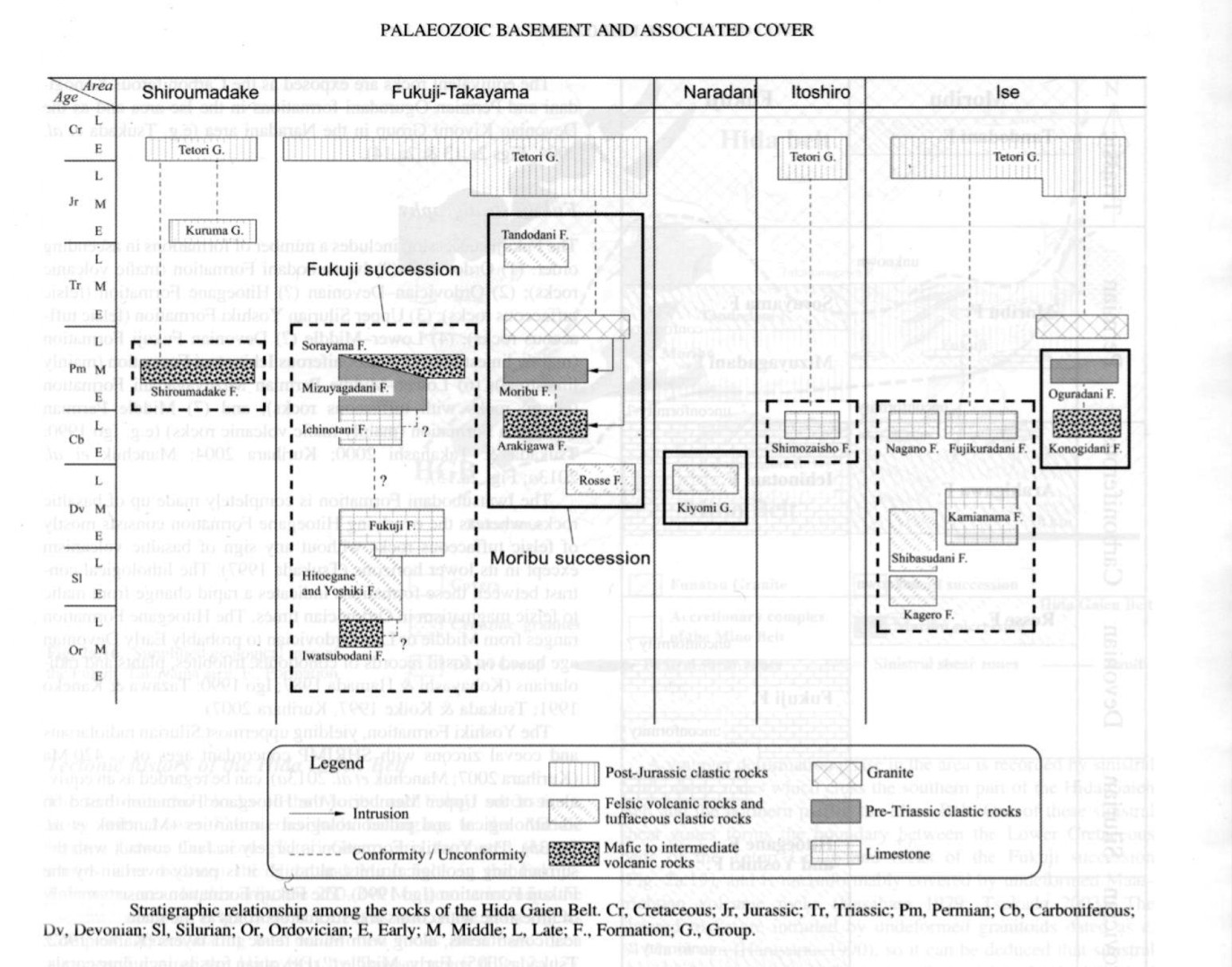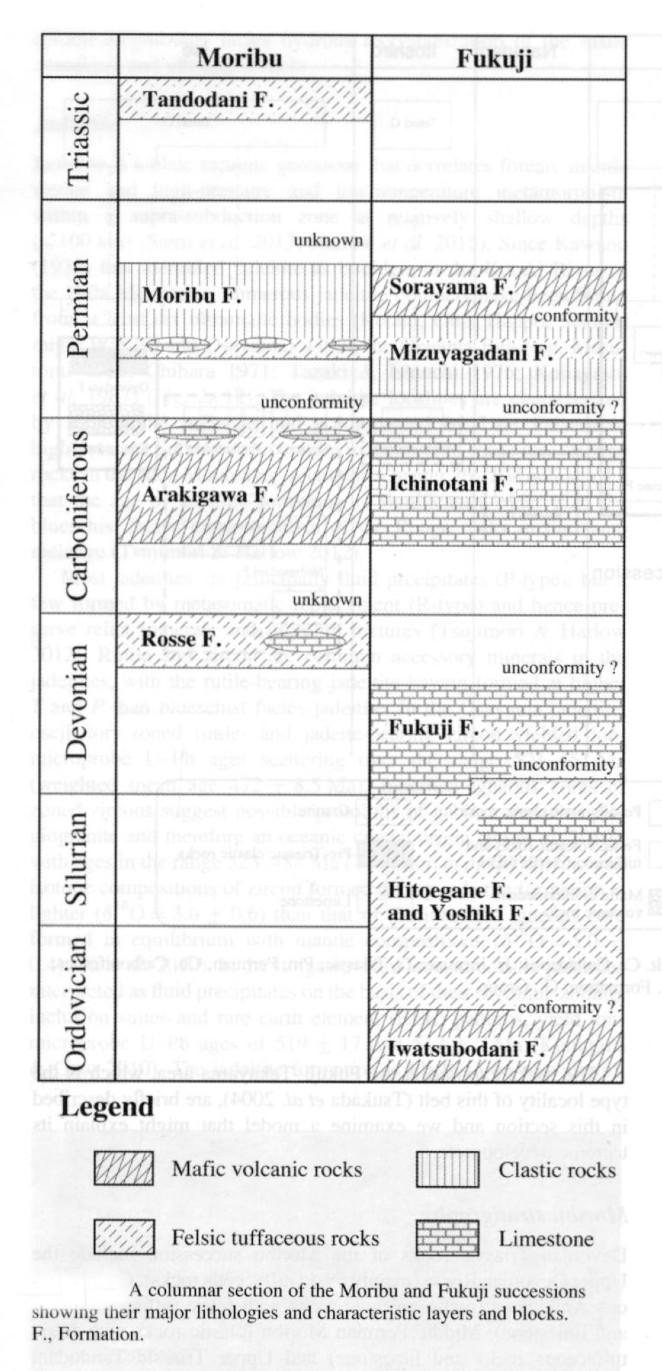Fukujitype Gr
Type Locality and Naming
The rocks exposed at the Fukuji—Takayama area (b), which is the type locality of this belt (Tsukada et al., 2004), are briefly described in this section
Synonym:
Lithology and Thickness
The Fukuji succession includes a number of formations in ascending order: (1) Ordovician(?) Iwatsubodani Formation (mafic volcanic rocks): ( 2) Ordovician—Devonian (?) Hitoegane Formation (felsic tuffaceous rocks); (3) Upper Silurian Yoshiki Formation (felsic tuffaceous rocks); (4) Lower—Middle (?) Devonian Fukuji Formation (mainly limestone); (5) Carboniferous Ichinotani Formation (mainly limestone); (6) Lower Middle Permian Mizuyagadani Formation (clastic rocks with tuffaceous rocks); and (7) Middle Permian Sorayama Formation (mainly mafic volcanic rocks) (e.g. Igo 1990: Tsukada & Takahashi 2000; Kurihara 2004; Manchuk et al. 2013a)
[Figure 1: Stratigraphic relationship among the rocks of the Hida Gaien Belt (after M. Ehiro et al., 2016)]
[Figure 2: A columnar section of the Muribu and Fukuji successions showing their major lithologies and characteristic layers and blocks (after M. Ehiro et al., 2016)]
Relationships and Distribution
Lower contact
Regionally, the schematic strat column indicates the next older unit as Sorayama Fm
Upper contact
Regionally, the schematic strat column indicates the next younger unit as Kuzuryu Subgroup Fm
Regional extent
Hida Gaien Belt- Fukuji-Takayama area (b)
GeoJSON
Fossils
Age
Depositional setting
Additional Information

